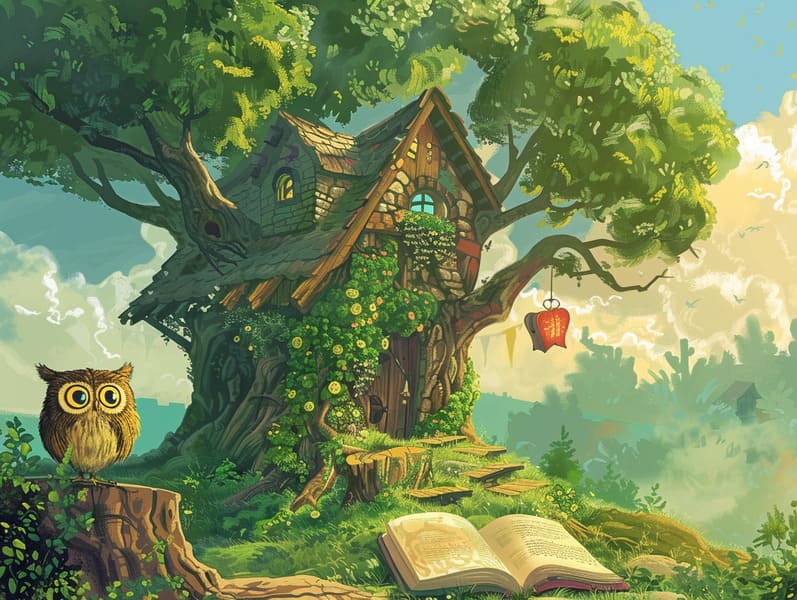Delving into the Background of Fairy Tales for Kids with Their Ageless Majesty.
Delving into the Background of Fairy Tales for Kids with Their Ageless Majesty.
Blog Article

Short fairy tales have ancient roots. These tales have been whispered from one generation to the next far before they were ever inscribed. They came from a variety of traditions, including American traditions. They were initially transmitted among elders, often carrying themes and messages related to the societal norms and beliefs of the time.
The famous Grimm duo, the two Grimm brothers, were among the first to compile many of these beloved stories. Their compilation, "Grimm's Children's Stories," included narratives like "Cinderella," "The Story of Hansel and Gretel," and "Snow White," which have since become essentials in the world of children's fairy tales. Similarly, Hans Andersen's delightful stories, such as "The Mermaid's Tale," and "The Little Duckling," have floated into hearts worldwide, solidifying their place in the pantheon of treasured fairy tales.
Even though they are old, traditional fairy tales remain as relevant as ever, especially as bedtime stories for kids. These fantastical tales are now available in different formats, including artistically illustrated books, delightful animations, and internet fairy tales.
Their enduring popularity can be connected to several magical reasons:
Ethical Lessons: Classic fairy tales often convey important moral lessons. Narratives like "The Wolf and the Liar" teach the value of sincerity, while "The Tortoise and the Hare" exemplify the virtues of resolve and unpretentiousness. These stories offer young ones clear distinctions between ethical and unethical, shaping their moral compass in a soft yet meaningful way.
Compassion and Knowledge: Traditional fairy tales frequently feature heroes facing problems and hurdles, encouraging young listeners to feel with their struggles and applaud their triumphs. For instance, "The Tale of Beauty and the Beast" highlights the merit of looking past the exterior to perceive the inner core of a being, promoting sympathy and comprehension.
Cultural Awareness: Many traditional fairy tales are saturated in the cultural contexts from which they grew. Engaging with these fairy tales can provide delightful insights into different cultures, encouraging a sense of world insight and acknowledgment.
Fantasy and Innovation: The supernatural elements in fairy tales—magical kingdoms—foster children’s innovative ideas. These fairy tales move readers to imaginary realms, promoting creative ideas and a sense of curiosity that endures a lifetime.
Classic fairy tales are not only delightful but also illuminating. They serve as alluring tools in strengthening various cognitive and emotional skills in young readers. When traditional fairy tales are voiced, they improve language acquisition by showing new lexicon and intricate sentence structures. This practice also cultivates auditory perception and mental focus, as young ones concentrate deeply, anticipating to see what happens next.
Furthermore, discussing the themes and characters of old fairy tales can cultivate reasoning skills and thought processes. The young learn to detect patterns, make predictions, and grasp cause and effect. These examinations also facilitate young ones say their thoughts and feelings, boosting their emotional intelligence.
In today’s online age, the abundance of web-based fairy tales has made these tales more within reach than ever. Web-based platforms and applications feature wide arrays of famous fairy tales that can be browsed or listened to anytime, anywhere. Fairy tales recited are particularly common, presenting an enjoyable way for the young to savor these bewitching tales. Read-aloud books and read-out-loud stories guide characters and settings to life, often enhanced by charming harmonies and melodies that elevate the tale experience.
The enduring charm of ancient fairy tales lies in their ability to shift to modern society while retaining their main lessons. Contemporary reimaginings of these stories often showcase more varied characters and modern settings, making them relevant to today’s audience. However, the key lessons of fearlessness, compassion, and fairness remain unchanged, continuing to appeal to kids of all ages.
Old fairy tales also offer a sense of security and recognition. They impart upon a structured narrative with awesome site a recognizable beginning, middle, and end, often ending with the finalization of conflicts and the triumph of virtue over vice. This uniformity can be reassuring for kids, affording a sense of sturdiness in an shifting world.
Old fairy tales continue to charm and inform new generations, maintaining their grace and value in modern society. As children's night stories, they yield a perfect blend of fascination and comprehension, promoting moral values, empathy, and creativity. The proliferation of digital fairy tales and the favor of fairy tales narrated validate that these traditional narratives remain obtainable to new generations.
By continuing and telling these tales, we continue to commemorate the rich tapestry of mythology and cultural heritage. Whether you are experiencing a beautifully illustrated book, accessing a digital collection, or listening via an read-aloud story, the majesty of ancient fairy tales is always within reach. These narratives highlight of the ageless spell of tales and its ability to connect us across eras and regions.
Regardless if you are discovering a vividly illustrated book, browsing a web collection, or playing an narrated book, the wonder of bedtime fairy tales is always within reach.
These narratives highlight of the persistent influence of storytelling and its ability to unite us across eras and regions, establishing a link that enchants and educates alike.